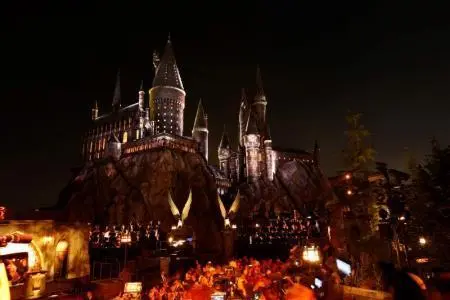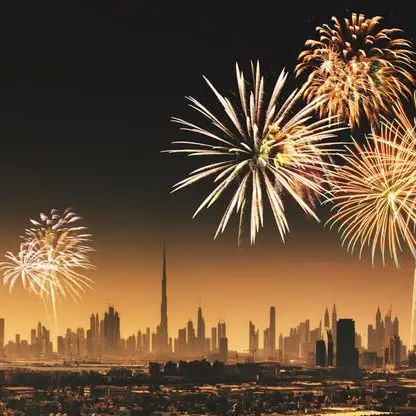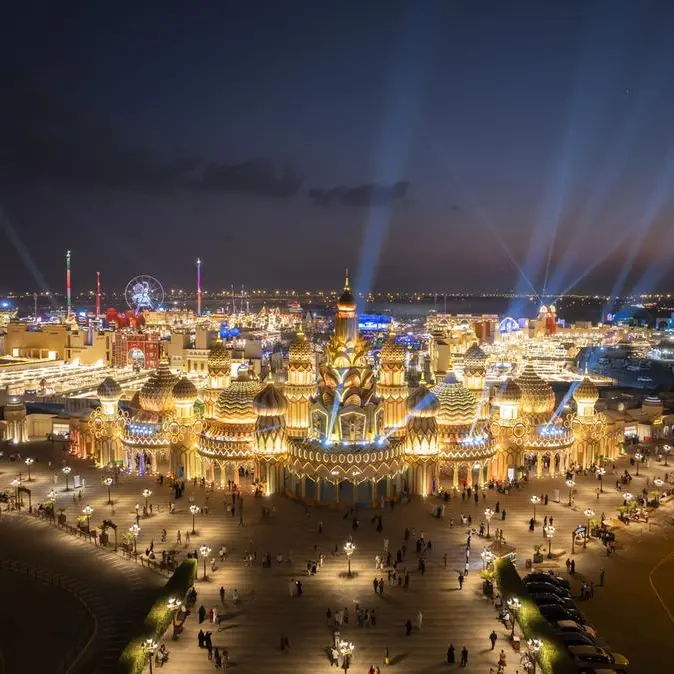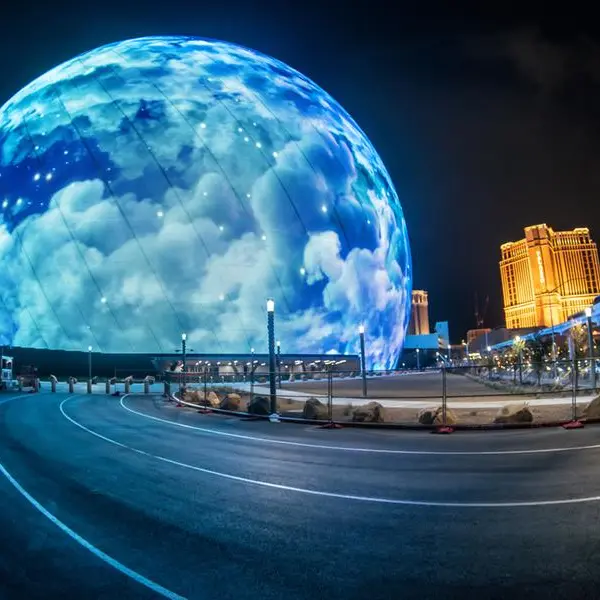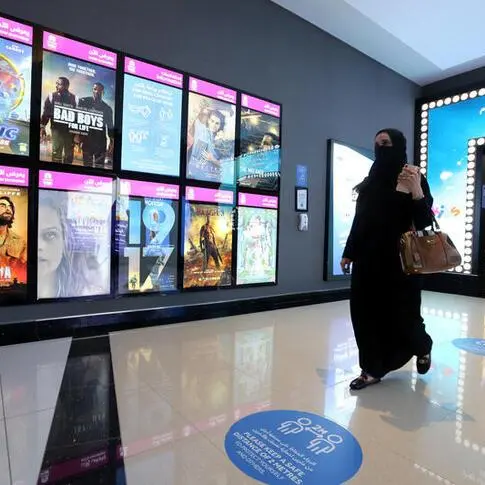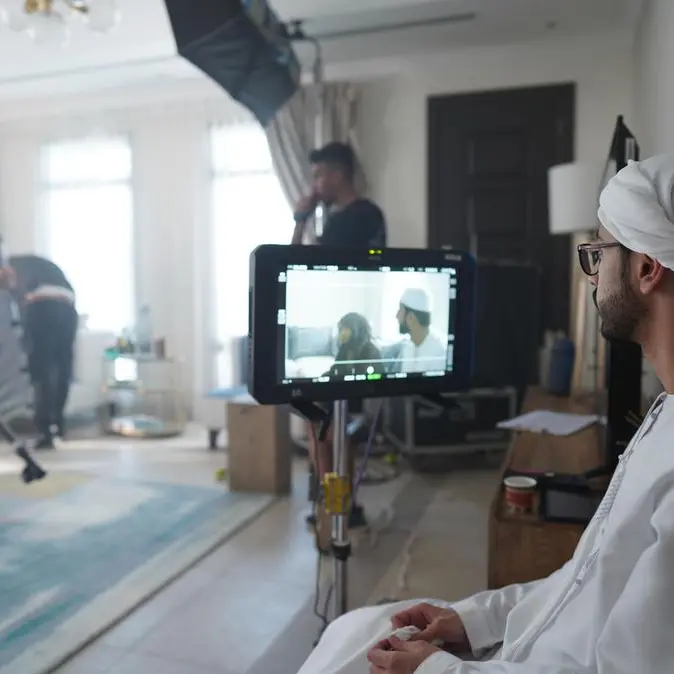PHOTO
Anyone travelling for the first time on the early morning train from London’s Euston station to Watford Junction on the outskirts of the city will be in for a surprise. Sitting next to the smartly-suited commuters are giddy adults and children wrapped in long black robes and thick scarves even when the sun is beaming outside.
The cloaked passengers appear to be on a pilgrimage and there is good reason for this. At the end of the line is the world’s only tour behind the scenes of the Harry Potter movies. It is housed inside two cavernous cream-coloured buildings at the historic Leavesden Studios where the Potter flicks were filmed along with other hits, including Wonder Woman 1984, Spider-Man: Far From Home and last year’s Fast & Furious movie, F9.
Mega fans flock to the tour from all over the world dressed as the boy wizard and his fellow students of Hogwarts School of Witchcraft and Wizardry. They are out in force now, thanks to the debut of the latest instalment in the Potter series — Fantastic Beasts: The Secrets of Dumbledore.
The films fuelled everything from merchandise to video games, a theatre show and theme park rides, which premiered in the United States in 2010. It irritated then London mayor Boris Johnson as Harry Potter’s creator J.K. Rowling was born in England and all the films were shot there.
In a newspaper article, Johnson urged Potter fans to write “to the great J.K. herself. Bring Harry home to Britain” and a spokesperson for his office added that “if a business came up with serious plans for a similar theme park for London, the mayor would be interested to hear them”. It spurred Warner to wave its magic wand and in March 2012, it swung the doors open to the Warner Bros. Studios Tour London. Fans don’t just turn up there in full regalia to show their appreciation of the Potter stories but also for some extreme escapism.
Once the huge wooden doors at the entrance swing open, guests are plunged inside the Great Hall, famous in the movies for its floating candles. The benches inside are lined with a festive feast, which seems to be enchanted as smoke billows from underneath the cauldrons seemingly out of nowhere. That’s just the start.
Fancy peering inside Harry’s dormitory at Hogwarts? It’s also on the tour. Ditto the full-size carriages of the Hogwarts Express steam train used in the movies. Guests can walk through them before strolling down the spooky Diagon Alley with models of towering colourful characters embedded in the wonky buildings. Just like on an actual movie set, instructions are scrawled on the reverse of the façades showing how they fit together.
At the touch of a button many of the sets come to life. An iron appears to move on its own in Harry’s friend Ron Weasley’s house and compartments cascade out of Hogwarts’ teacher Remus Lupin’s suitcase in an effect you would’ve thought was created by a computer when you see it on the silver screen. Other exhibits are even more interactive.
One allows a computer-generated character to be controlled by guests moving their hands and arms whilst another digitally inserts visitors onto the back of a broomstick. The original movie props are within touching distance so you can get blockbuster selfies with them. There are costumes, wigs and, of course, wands. Rows and rows of them. Every item is meticulously labelled with details of the film it was used in, the character it was used by and even the fictional materials it is meant to be made of.
Next to the props are panels with profiles of the production team and screens showing interviews with them about the movie-making process. They even reveal the tricks of the trade, like how they create a moss effect by blowing green-coloured sawdust onto sticky artificial trees. It makes you feel like a director in the making and even if you’re not a Potter nerd it’s hard not to be enchanted by the attention to detail. The tour saves the best till last.
The finale begins when guests are led into a dimly-lit room packed with eerily-realistic rubber costumes of goblins. In the movies they man the desks of the gleaming Gringotts Wizarding Bank under their leader played by British actor Warwick Davis. A video of him plays on a screen next to the creepy collection of prosthetics and explains how they were created. Each strand of hair was sewn in and you can get close enough to see them all. Even the wrinkles in their foreheads are visible, which soon has you wanting to move on.
As you round the corner of the dingy room there’s a spectacular sense of reveal as visitors suddenly find themselves in the bright and airy full-size lobby of Gringotts. There’s an intricate tiled floor and golden columns soaring up to the ceiling where shimmering chandeliers hang down. Just like in the films, Goblins with quills in their hands sit at wooden desks lining the walls and there are gates at the end of the room leading to the vault.
Hidden inside are the treasures of evil witch Bellatrix Lestrange, played on screen by Helena Bonham-Carter. A total of 210,000 coins were created to fill the vault in the final two Potter films alone and they appear to tower over visitors to the tour in a fun photo opp.
The mountain of money is just out of reach and if you look hard enough you find that the coins get smaller the higher up they are in the pile. Known as forced perspective, it’s a movie-making trick, which makes the stack seem to soar higher than it is in reality. It was the brainchild of Oscar-winning production designer Stuart Craig who worked on the Potter film series as did the tour’s construction manager Paul Hayes and head propmaker Pierre Bohanna.
As visitors leave the treasure behind they enter a set, which makes a stark contrast to the sparkling lobby. It is based on the events of the final movie, Harry Potter and the Deathly Hallows – Part 2, where the banking hall is destroyed by a dragon known as a Ukrainian Ironbelly. On the tour, a high-resolution screen is seamlessly integrated into an elaborate smouldering set of smashed floor tiles and cracked columns to make it seem like the dragon is emerging from mist and breathing fire. It took more than the wave of a wand to bring the scene to life.
“We were two years from initial concept to opening day,” says Michael Finney, technical lead and director of special projects at Thinkwell Group, the design wizards behind the tour. Thinkwell have conjured up attractions at theme parks all over the world, including Universal Studios in Orlando and Warner Bros. World in Abu Dhabi. Finney says the involvement of the filmmakers had a magic touch on the tour.
“The key to making the destroyed banking hall work was working with Stuart Craig and Paul Hayes’ teams to design and develop the ‘destroyed’ set elements, which aren’t actually destroyed, but are built up to look like they were.” He adds that the screen behind the set “creates the illusion of a contiguous space with the physical blending into the media”. “The look and feel of the projected environment had to be finetuned to look just right architecturally as well as the lighting, smoke effects, etc.” It was down to old-fashioned trial and error.
“Getting the image views for the projection to work took a great deal of previsualisation, on site testing, adjusting of the media, and then several passes to get the projectors to blend the media with the physical set,” says Finney. In summary, the projectors had to be positioned just right so that the seam between the physical set and the screen behind it was invisible to visitors. Finney adds that “the controlled use of atmospheric fog and mist helps with the blend of foreground and background elements”. Thinkwell also employed Hollywood trickery to pull it off.
“There is a half of a physical chandelier hanging right in front of the projection screen. We didn’t have enough space for rear projection, so we had to work very carefully with the filmmaking team to get the chandelier as close as possible to the screen so it casts as small a shadow as possible. This took a lot of fine tuning to get right.” Even that wasn’t enough.
“We ultimately had painters from the film crew painting the blend line between the set and the projected image,” says Finney. “We also had a long collaboration with Double Negative, the visual effects studio that originally brought the Ukrainian Ironbelly to life on-screen, to rebuild the dragon assets, and then to craft the performance of the dragon itself with computer-generated animation.
The tour benefited from the fact that the Potter books were still being released when the films were being made. It made the filmmakers reluctant to destroy the sets, as often happens in the movie industry, because they knew they might be needed again.
Gringotts was built using original set pieces whilst ones which didn’t stand the test of time were recreated using the original production moulds and techniques. Surprisingly, despite its startlingly-detailed appearance, the intricate floor of the banking hall isn’t the one which was used in the movies as that wasn’t designed to withstand the heavy traffic from the guests who stream through the tour’s turnstiles. The tour attracts around two million guests a year and casts a powerful spell on Warner’s bottom line.
Warner owns the tour’s home of Leavesden Studios and according to its latest financial statements, in the year-ending December 31, 2020, it generated Dh475.6m (£103.3m) of revenue which was down 47 per cent on the previous year due to the pandemic. Despite this drop, it still finished the year with an Dh48.8m (£10.6m) net profit.
The tour generates 46 per cent of Leavesden’s revenue with the remainder coming from the studio itself. Since the tour opened in 2012, it has generated a total of Dh3.3bn (£711.3m) in revenue fuelling an Dh1.1bn (£234m) dividend payment to Warner. The accounts show that the tour and studio buildings are valued at Dh1.2bn (£263.1m) with the contents worth another Dh165.3m (£35.9m). A number of tricks up its sleeve have helped it through the pandemic.
There are no rides and, therefore, no queues. Furthermore, the only way to get in is by booking a ticket so numbers can be carefully managed. This improves safety and the guest experience which is as exclusive as it comes. The tour is the only one of its kind in the world so there is no shortage of interest. Although a counterpart will open in 2023 in Japan, it is too far away to be a competitor.
Nevertheless, the tour isn’t resting on its laurels and will celebrate its tenth anniversary this year with the opening of a new area in July. This will take guests inside a giant greenhouse filled with enchanted plants which were brought to life in the Potter movies partly using CG animation. The tour will recreate the menagerie with models and guests will be able to pull out a potted Mandrake as Harry and his chums do on screen.
Finney says the secret to success is ensuring that the guests can’t work out how the effects were created. “I would say the secret to using any kind of technology is to make it disappear, and for visitors to lose themselves in such a way that they’re not thinking at all about how an experience was created.” Now that really is magic.
Copyright © 2022 Khaleej Times. All Rights Reserved. Provided by SyndiGate Media Inc. (Syndigate.info).
